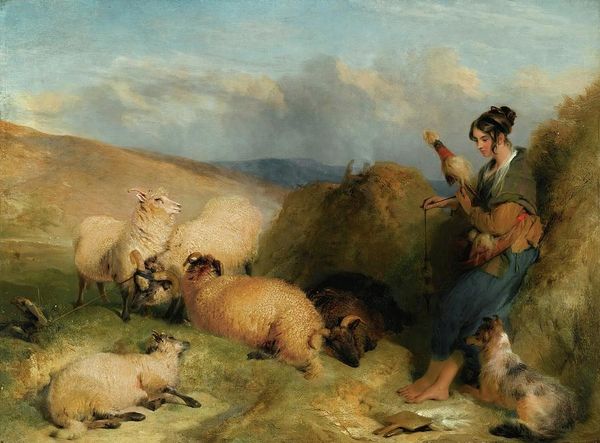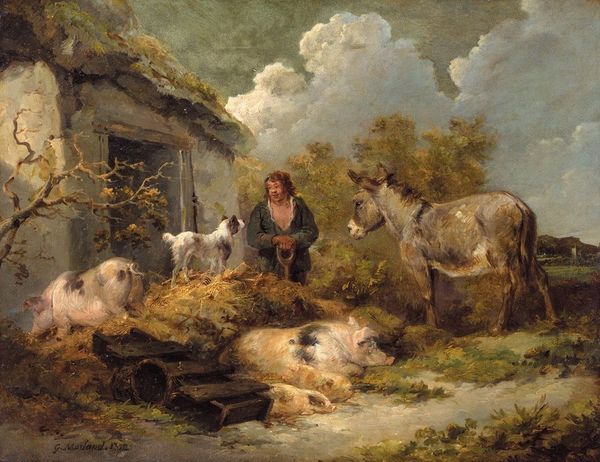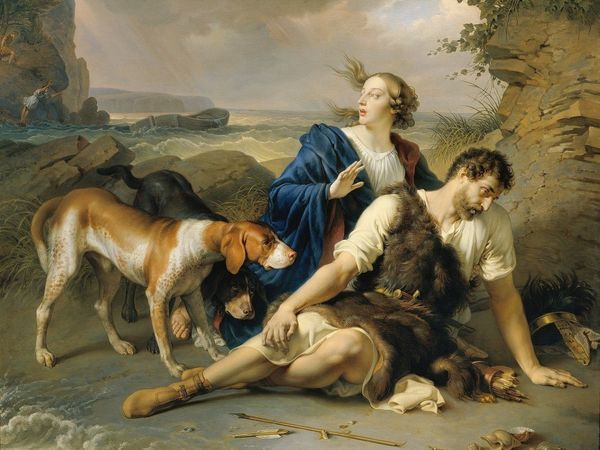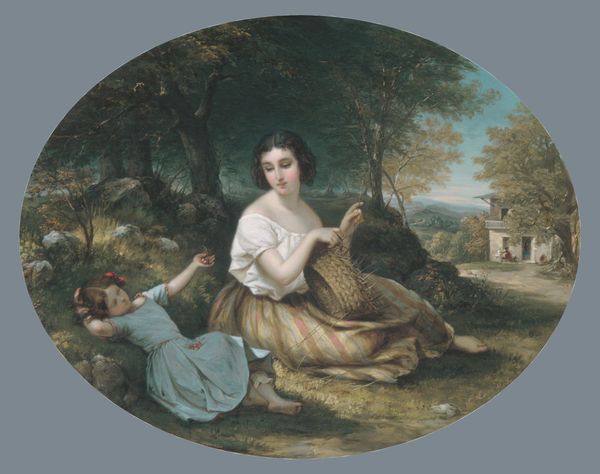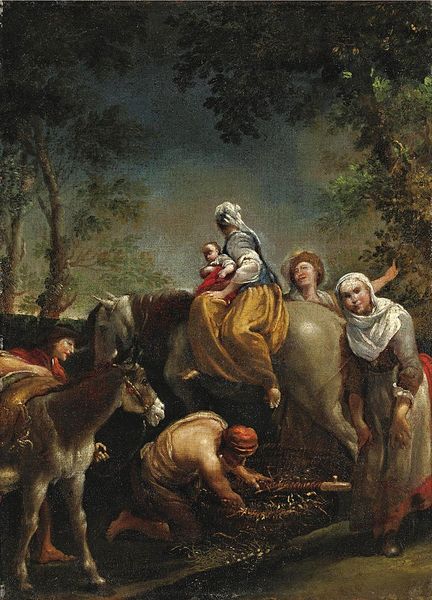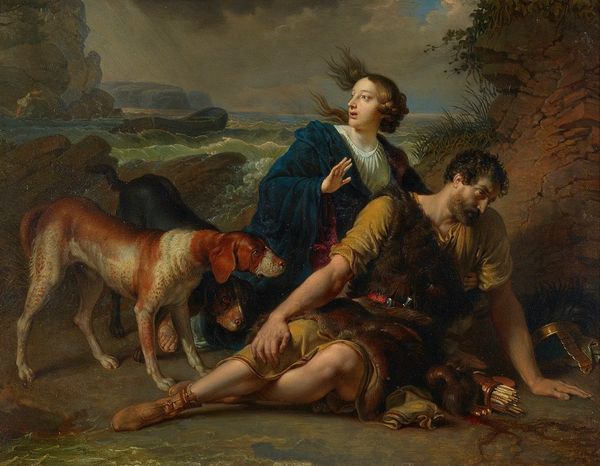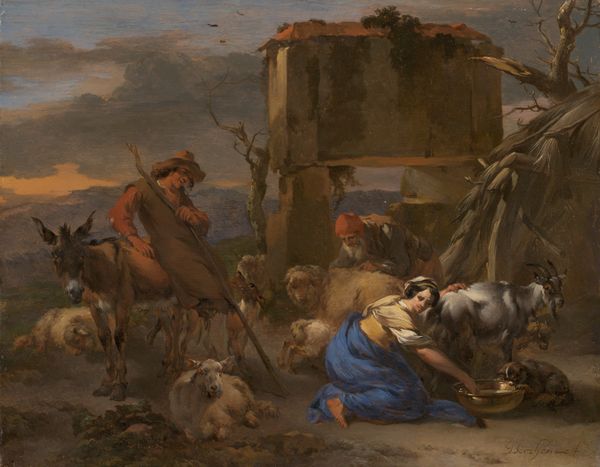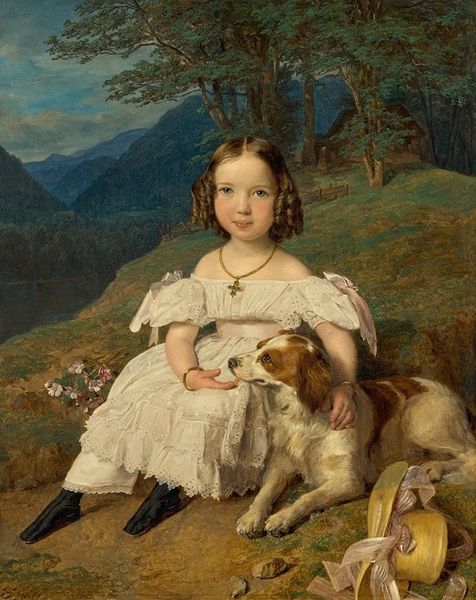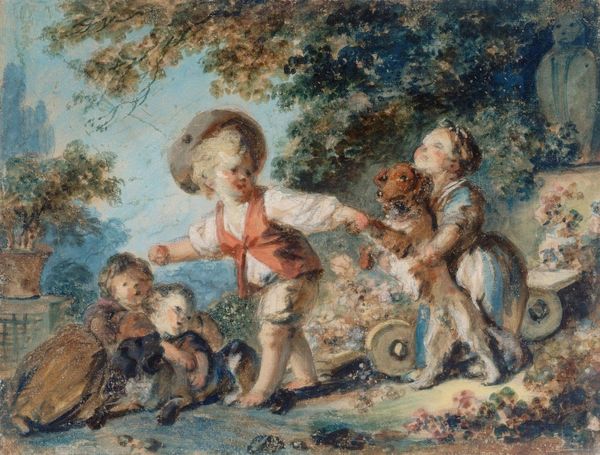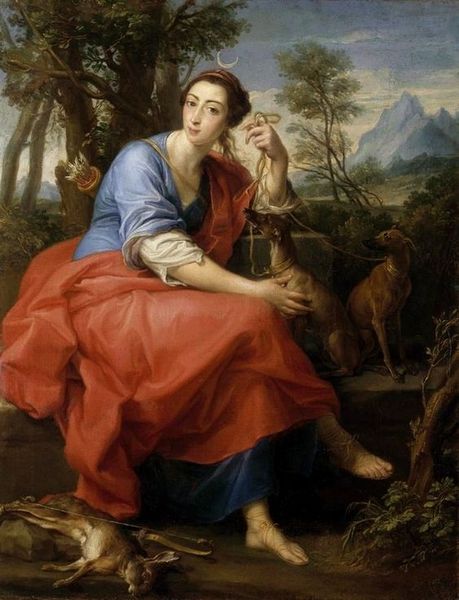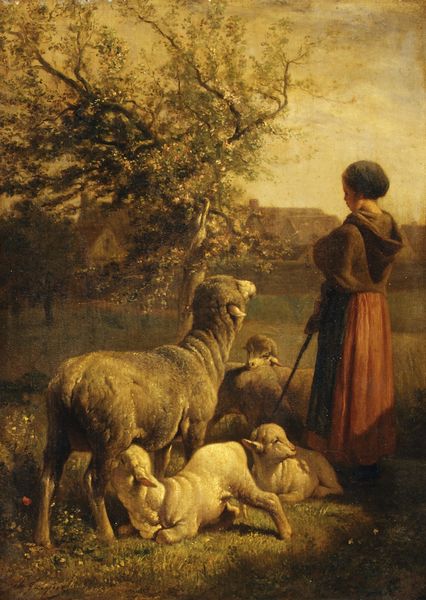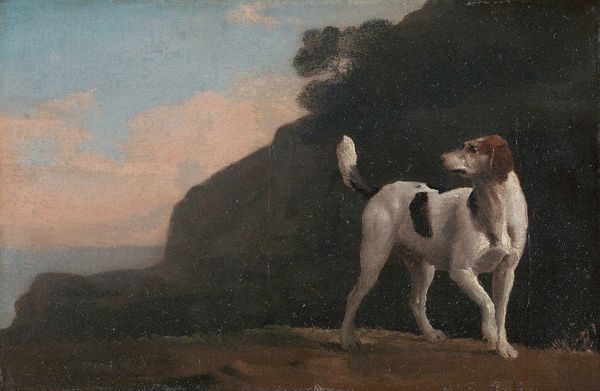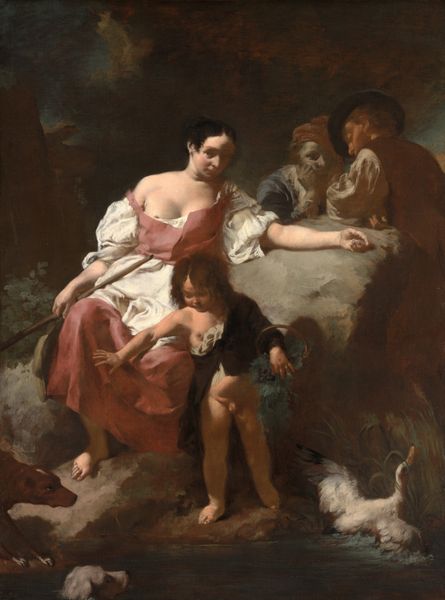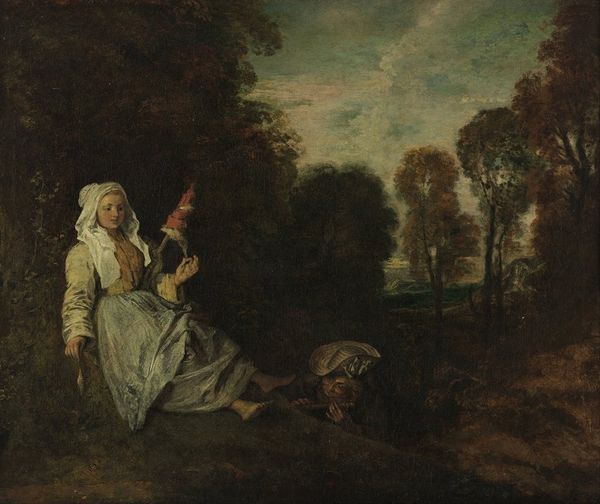
Copyright: Public Domain: Artvee
Curator: Let’s take a closer look at "The Gamekeeper’s Daughter," painted in 1860 by William Powell Frith. It’s a wonderful example of genre painting from the Victorian era. Editor: My immediate response is warmth, despite the rather muted color palette. The figure is surrounded by these eagerly waiting dogs. It feels… tender. Curator: It’s fascinating how Frith constructs an image of idealized rural life, embedding notions of social hierarchy and gender roles within the seemingly innocent scene. Consider the daughter herself; her place in the household is directly correlated to labor, visibility and sustenance. Editor: Absolutely. But look at the array of breeds gathered, almost posed for a photograph! These are not simply dogs; they represent faithfulness, labor, even a kind of unspoiled naturalness idealized during the period. The composition places the girl at the very centre, in communion with these animals. Is it not allegorical, depicting mankind's closeness to the natural world? Curator: Precisely. The romanticising of nature becomes a commentary on Britain's colonial expansion and industrial transformation during the 19th century. Note how the painting does not reveal signs of such expansion, thereby erasing historical truth and social stratification from view. In doing so, such a perspective becomes political. Editor: A lovely point, and that adds nuance to my previous impression, the idealized harmony perhaps functioning to smooth over social disquiet, and thus supporting it. And there's visual tension— the careful detail in the foreground dissolving into a looser, romantic landscape. Could this visual dichotomy itself reveal conflict or ambiguity? Curator: The landscape provides a serene backdrop but, as you point out, lacks the sharp precision granted to the human and animal figures in the foreground. The treatment speaks of the artifice behind constructed idyllic visions. Editor: It has really altered my interpretation. Initially, I was responding to that surface charm. Seeing through this with the lens of class and industrialization, reveals something quite subversive and poignant, almost foreboding. Curator: Indeed. Through understanding the context and the artistic intention, this portrait, once seen, cannot be unseen. Editor: Absolutely! And noticing these deeper visual tensions makes the act of looking so rewarding.
Comments
No comments
Be the first to comment and join the conversation on the ultimate creative platform.
